
Table of contents:
- Highland Straight: the exclusive representative of the Scottish "dynasty"
- History of the origin of the breed
- External features of the Scottish Longhair
- Character and behavior
- Health
- Choosing a kitten
- Features of the care and maintenance of highland straights
- Breeding the breed
- Castration and sterilization
- Reviews of the owners about the breed
- Author Bailey Albertson [email protected].
- Public 2024-01-17 22:26.
- Last modified 2025-06-01 07:32.
Highland Straight: the exclusive representative of the Scottish "dynasty"
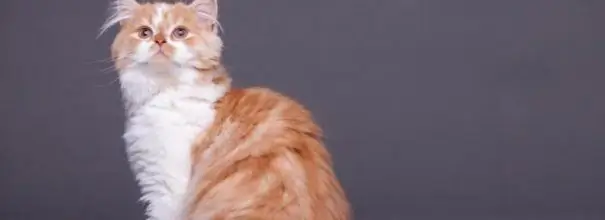
Soft flowing hair, childishly naive look of wide-open eyes, aristocratic and graceful manners - this is how you can describe the Scottish straight-eared long-haired cat. Representatives of this breed are better known among specialists as Highland Straights. Despite the recent history of their origin, they have already gained popularity among cat lovers around the world. Due to their docile and good-natured nature, fluffy pets feel comfortable both in a large family with children, and with one owner.
Content
- 1 History of the origin of the breed
-
2 External features of the Scottish Longhair
-
2.1 Table: breed description (WCF standard)
2.1.1 Video: Scottish Long-haired Straight cat at an international show
-
2.2 Color
2.2.1 Photo gallery: varieties of colors
-
- 3 Character and behavior
- 4 Health
-
5 Choosing a kitten
5.1 Video: Highland Straight kitten
-
6 Features of the care and maintenance of highland straights
- 6.1 Hygiene
- 6.2 Toilet
- 6.3 Feeding
- 7 Breeding the breed
- 8 Castration and sterilization
- 9 Host reviews about the breed
History of the origin of the breed
According to an unofficial version, the Scottish farmer William Ross became the "discoverer" of the Highland Straights. Quite by chance, he turned out to be the lucky owner of long-haired kittens with funny erect straight ears. Unusual offspring was the result of crossing a British cat and a Scottish mother. William decided to transfer the babies to familiar breeders from London, but the friends were not particularly interested in the new breed, since straight cats were not in demand at that time.
Soon the results of an unusual experiment became known to American breeders. They were the first to start breeding long-haired straight-eared Scots. Breeders were not satisfied with the meager palette of animal colors, as well as some external characteristics. To improve these indicators, they crossed the Scots first with long-haired Persians, then with British cats. The unusual breed received official recognition in the second half of the last century.
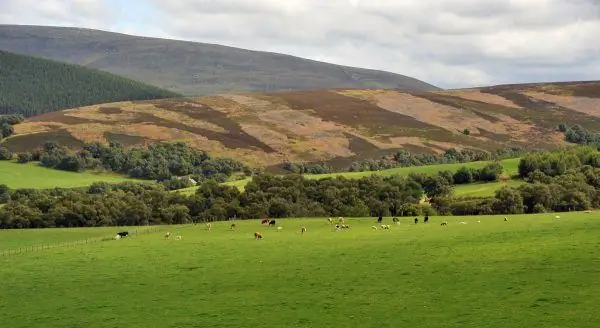
The name of the breed comes from the name of the highlands of Scotland
Long-haired Straight are still considered a rather rare subspecies of Scottish cats and are not found as often as short-haired Scottish cats. There are very few nurseries in the world specializing in breeding this breed, therefore, such animals can be seen extremely rarely at exhibitions. By purchasing such an exotic pet, the owner becomes the proud owner of an exclusive representative of the Scottish "dynasty".
External features of the Scottish Longhair
The Scottish Straight inherited a long flowing coat from its Iranian ancestor, the Persian. It differs somewhat in structure and has a number of advantages: it does not get tangled, does not need frequent washing, and sheds less. A defect is considered too soft wool-like wool.
The Highland (like all Scottish cats) has a special gene in the blood that makes the ear cartilage weak. A similar mutation manifests itself in "folds" in the form of ears pressed to the head. The Highlands, on the other hand, have no tilt to either side, but the ears are incredibly thin to the touch. Such funny "antennae" ears in combination with sleek long hair are the main distinguishing features of the representatives of this breed.
Only purebred Scots who meet the breed standard description are allowed to participate in exhibitions. Disqualification is possible due to a too short or deformed tail. Soreness of animal movements and poor health are also considered unacceptable.
Table: breed description (WCF standard)
| Parameter | Description |
| Weight | Cat - 3.5-4 kg, cat - about 4-6 kg |
| Height at withers | About 30 cm |
| Head | Round, with a strong chin, a wide nose, full cheeks, a prominent forehead. |
| Ears | Medium in size, broad at the base, with pointed tips sticking straight up. |
| Eyes | Large, regular round shape. |
| Limbs | Legs of medium length, tarsi with tightly closed toes. The tail is long and mobile, thick at the base and tapering towards the tip. |
| Body | Muscular and dense, rectangular, muscular. |
| Wool | Long, dense, with an abundant undercoat, dense, not taut. |
Video: Scottish Long-haired Straight cat at an international show
Color
Highlands inherited a variety of colors from British cats as a result of cross-breeding. The color can be either monochromatic (solid), implying the absence of any inclusions of a different color, or with a color pattern. In the first case, the most common cats are blue, cream or purple. Less common are animals of white, black, red or chocolate shades.
The most common colors with color patterns are:
- tortoiseshell (torti) - spots of cream, gray, white or red colors are evenly scattered on the main monochrome background;
- point - the hair on the body is 1-2 tones lighter than on the ears, tail, paws and muzzle;
- van - snow-white "coat", with the exception of the muzzle and tail. Stains on the body and legs are allowed.
World felinological organizations recognize all types of colors, therefore long-haired straight-eared Scots of all colors are allowed to participate in exhibitions.
Photo gallery: varieties of colors
-

Highland straight colors "van" - Van cats look like plush toys
-

Highland straight tortie - Straight tortoiseshell looks very stylish
-

Highland straight white - Snow-white white color is a rare occurrence among straights
-

Point highland straights - Highland straights point color are somewhat reminiscent of Siamese
-

Blue highland straight - Blue - classic highland straight color
Character and behavior
The Scottish Long-haired Straight is an intelligent, well-mannered and well-balanced cat, distinguished by a peaceful disposition. She is friendly, sociable, willingly makes contact with adults and children. Can easily make friends with any other pets (cats, dogs, chinchillas, guinea pigs, hamsters, etc.). She does not show unreasonable aggression, she is not used to zealously defending her territory, so she will be happy to share with another animal delicacy from her bowl.
Highland is very attached to the owner, but does not impose his society. Inborn patience and endurance do not allow him to distract the owner from important matters in order to ask for food. In childhood, it is characterized by energy, curiosity, but with age it becomes more sedate and less active. The game prefers passive rest in a chair or on a windowsill.
Character flaws include:
- isolation. The Highland Straight hates the frequent invasion of privacy. He does not like to be squeezed, stroked for a long time, so he is not very suitable as a pet for those who want to have a live soft toy. The owner will have to respect the freedom and independence of the cat;
- rancor. Like all Scots, the representative of this breed does not tolerate violence, humiliation, therefore, for a long time he remembers the insults inflicted by the owner (especially physical punishment). The pet's revenge can be very diverse: from stripped wallpaper to a fetid puddle on the bed;
- vulnerability. Long-haired straight-eared are gentle and sensitive creatures, therefore they very badly perceive screams and swearing. The owner, who has a quick-tempered character and likes to raise his voice often, will be avoided and ignored by the pet in every possible way. It is for this reason that getting such a cat is recommended for calm people with a balanced psyche.

Highland Straight loves to retire
From personal experience, I can say that it is very easy even for a stranger to find mutual understanding with the Highland Straight: it is enough to show gentleness and patience. Let me give you a concrete example: once my friend went to rest, and left her beautiful Dusya (a representative of the aforementioned breed) for me for a week. Knowing the psychological characteristics of a cat, I did not immediately pick it up, kiss and squeeze. The first hours of staying in the house, Dusya looked closely at me, and then the first one came to meet me and even jumped on her knees. The week passed unnoticed: I did not bother the cat once again, so she herself often expressed a desire to lie down next to me on an armchair or sofa. Takeaway: If you want to befriend a Highland Straight, respect their privacy.
Health
The average life span of Scottish Straight Longhaired cats is 12-15 years. With proper care and maintenance, the period can easily be extended by another 5-6 years, because nature has awarded the representatives of this breed with good health. They have strong immunity, so they have good resistance to infections.
Highlands have no specific genetic diseases, but there is a tendency to rickets. This ailment is caused by calcium deficiency: when it is not enough in the body, it is washed out of the bones and teeth, causing them to soften. With untimely treatment, serious problems arise with the musculoskeletal system (inflammation of the joints, curvature of the paws, lameness, deformation of the chest).
Typical symptoms of rickets:
- decreased activity;
- a large inflated belly against the background of an overly thin body;
- noticeable sagging of the back;
- dull coat;
- softening of the stool and diarrhea;
- increased appetite;
- convulsions.
At the initial stages of the development of the disease, it is necessary to introduce into the diet food containing calcium (cottage cheese, meat, milk, cereals, eggs). The pet should be moved to a dry and bright room with sufficient access to daylight. It is advisable to ventilate the room more often, you can walk with the cat in sunny weather. In the absence of positive changes, you should immediately seek help from a veterinarian.
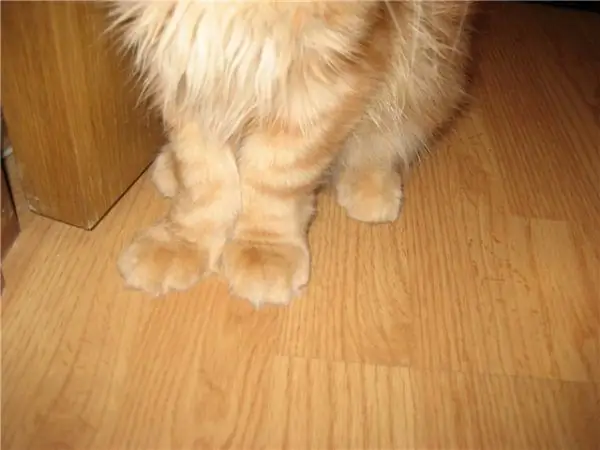
Curvature of the tubular bones of the paws is one of the worst consequences of rickets in cats
To keep your pet healthy for many years, it is enough to adhere to simple rules:
- carry out timely vaccination and deworming;
- adhere to the schedule of prevention against ticks, fleas, worms;
- timely replenish the calcium deficiency (give the cat special vitamins or food that contains this trace element);
- visit your veterinarian regularly.
Choosing a kitten
It is recommended to buy a kitten in a specialized nursery. The optimal age is 2.5 months. By this time, the baby has matured, formed, socialized and is already ready for an independent life without a mother. When choosing a kitten, you need to pay attention to its appearance, behavior and health. An inert, sedentary pet with dull coat probably suffers from a serious illness. If the animal is aggressive towards people and does not make contact, you should also refrain from buying: it is unlikely that at home he will be able to quickly adapt to the new environment.
The following signs indicate the good health of the baby:
- smooth and shiny coat;
- absence of kinks, deformed vertebrae and nodules on the tail (the tail should be mobile);
- clean eyes, nose, and ears (any discharge or bloom signals the presence of parasites);
- a strong physique, a toned belly (excessive thinness, a swollen tummy - the consequences of malnutrition or symptoms indicating gastrointestinal diseases);
- lack of breath (the kitten should smell nice of milk).
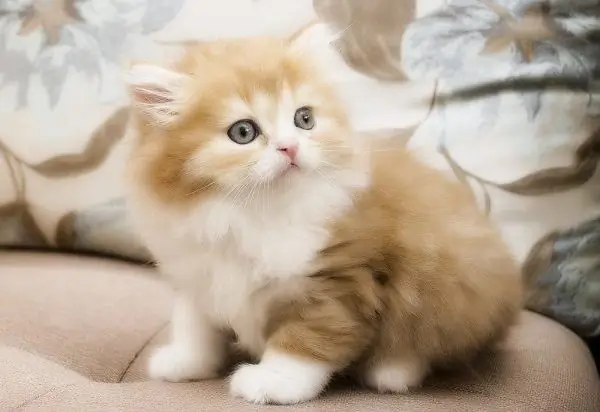
At the age of one and a half months, it is not difficult to identify a Highland Straight
The cost of a highland straight varies between 10-60 thousand rubles. Private catteries mainly sell pet-class kittens (acting exclusively as pets), elite kittens intended for breeding or participating in exhibitions. Before buying, it is advisable to familiarize yourself with the pedigree of the pet, study the veterinary passport, look at the kitten's parents.
The sex of the future pet does not matter if the owner does not plan to breed the breed. Both cats and cats are equally non-aggressive and peaceful in character - here it is only a matter of personal preferences of the future owner. If the plans are to obtain offspring from a pet, then I advise beginners to take cats, since cats are more demanding on the diet during pregnancy, need special care and maintenance. Without certain knowledge and skills, it will be extremely problematic to raise healthy kittens and help the mother-cat to recover from childbirth.
Video: highland straight kitten
Features of the care and maintenance of highland straights
Highland Straights are unpretentious in care and maintenance, so they can be started even by beginner cats. Representatives of the Scottish "dynasty" feel comfortable at home, so they rarely go outside the apartment, do not need to walk. If the owner has a desire to walk with the pet, it is advisable to do this in cloudy cool weather, since Highland Straights do not tolerate heat well.
Since the Scottish Straight is prone to solitude, it is advisable to equip the cat with a personal sleeping place. It can be a scratching post with a couch or a closed house.
Hygiene
Unlike many other long-haired cats (Persians, Maine Coons, etc.), the Highland Straight's coat has a different structure, so it sheds less and does not cause much trouble for the owner. To avoid the appearance of tangles, it is enough to comb the pet 2-3 times a week with a brush with long stiff bristles. During molting, you can remove dead guard hairs with a slicker.
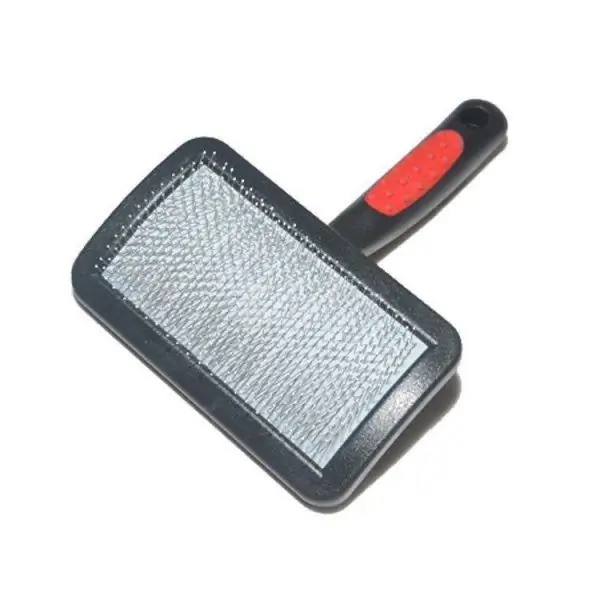
The slicker can be used during molting
You can bathe the cat no more than 4 times a year (otherwise the coat will quickly fade). To do this, you need to use a special shampoo for long-haired cats, which is sold in pet stores (for example, Rolf Club, Jerob, Hartz). It can be either wet or dry (at the request of the owner). After bathing, the pet can be dried with a hairdryer, but the air jet should not be hot, otherwise the coat will become brittle and dry. Keep the hair dryer at a distance of 30-40 cm. If the cat is afraid of a noisy device, it is enough to wrap it tightly in a towel for 5-10 minutes. It will absorb excess moisture, after which the wool will dry naturally.

Rolf Club - a good conditioner shampoo for long-haired cats of domestic production
Never use human shampoos to wash cats. They contain a large amount of alkali, which can lead to a rash on the pet's skin or allergic reactions. If there is no specialized product for animals at hand, and the hygienic procedure cannot be canceled, you can, as an exception, use baby shampoo.
In addition to combing, the basic hygiene procedures also include:
- rubbing the fur around the eyes in case of discharge;
- cleaning the auricles as they become dirty (it is enough to treat with a damp cotton pad);
- brushing your teeth every 1-2 weeks;
- monthly nail trimming (optional).
Restroom
Since Highlands are very clean cats, it is advisable to keep the litter box as far away from the food bowl as possible. The place for the toilet can be arranged in the bathroom or in the toilet. The room should always be in the open, so the door should be left ajar.
From the first days of the appearance of a kitten in the house, you should use the tray to which the baby is accustomed (breeders usually give it along with the animal to the new owner). As you grow older, you will need to purchase a larger model with high sides. For long-haired cats, it is recommended to purchase litter with coarse granules, as small particles often stick to the coat. Both absorbent and lumpy litter are suitable - it all depends on the preferences of the pet. It is undesirable to buy flavored products, since foreign odors can discourage the cat from going to the litter box. Highland Straight will not relieve the natural need for a dirty toilet, so the litter must be changed in a timely manner, and the tray must be washed as it gets dirty.
I have a Persian cat at home, so I know firsthand about the problems with choosing a filler for long-haired pets. My fluffy categorically refused silica gel and clay granules, but sawdust liked him. They are odorless, pleasant to the touch, but completely unsuitable for cats with long hair. After going to the toilet, my pet was covered in sawdust (especially the belly and paws). I have tried all kinds of fillers to no avail. However, a compromise was soon found: it turns out that the cat most of all liked to go to the toilet on an empty litter box without grates and any filler. This is how unpredictable pets are.
Feeding
Highland Straights are immoderate in their food, so they easily gain excess weight. To avoid obesity, it is recommended to feed your pet super premium food for elite breeds (eg Brit, Almo Nature, Grandorf, Bozita). If the owner prefers natural food, he should carefully think over the menu, include special vitamins for cats in the diet. You can give fluffy boiled meat (chicken fillet, beef, turkey meat), eggs, cottage cheese, low-fat kefir, porridge (oat, buckwheat), vegetables and fruits. You need to refuse such products as:
- pork;
- boiled potatoes;
- fish;
- sweets;
- grapes;
- raisins;
- mushrooms.
All of them are poorly absorbed by cats, leading to problems with stool and gastrointestinal diseases. Also, you can not give your pet spicy, salty and fried food. A kitten should be fed 4 times a day, an adult cat should be fed twice a day.
Breeding the breed
Highland Straight can be crossed with a representative of the same breed, and with long-haired or short-haired fold cats. In the second case, babies are born with different lengths of wool. In one litter there can be both straight and fold kittens.
Males reach sexual maturity at 10 months of age, so from that time they can mate at any time. A cat's first estrus begins at 7-8 months, but the body has not yet fully formed in order to bear and give birth to healthy offspring. You can take her to a gentleman only at the age of 1.5 years. Mating usually takes place on the groom's territory. The animals are left alone in a closed room for 2-3 days, after providing a sufficient amount of food and water.
A cat's pregnancy lasts 63-67 days. She becomes more calm, peaceful. Before giving birth, he begins to look for a nest, so the owner needs to put a spacious box in advance. Labor usually goes without complications. In order for the cat to recover faster, a complex of vitamins and minerals for lactating animals should be included in the diet.
Castration and sterilization
If the owner does not plan to engage in breeding, he should make a decision in advance about neutering or neutering the animal. It is desirable to carry out such operations at the age of 10-12 months. Castration implies the complete removal of the genitals, and sterilization only makes it impossible to reproduce offspring, but does not eliminate the need to mate. The first option is much more humane, since the animal does not suffer from the absence of a partner, completely loses interest in the opposite sex.
After surgery, cats recover within 4-5 days, cats - about 2 weeks. For the rehabilitation period, it is better to put the pet's bed on the floor, put bowls of food and water next to it so that the animal does not have to walk and jump a lot. Wounds should be treated with brilliant green. In order not to disperse the seams, you need to put on a special blanket on the cat.
Some owners give their pets special drugs that suppress sexual desire, believing that this method is more humane than castration or sterilization. I strongly advise against adopting their experience. Veterinarians have proven that frequent use of pills or hormonal drops leads to metabolic disorders and serious health problems. In addition, this method does not solve the problem: cats still leave smelly marks, and cats become lethargic and irritable.
Reviews of the owners about the breed
Despite the fact that the breed was developed almost half a century ago, Highland Straights are still considered rare representatives of the Scottish "dynasty". In addition to their bright appearance, they have a number of advantages: they are clean, they cope with hygienic procedures on their own, and do not require special care. They quickly find a common language with people and animals, but most of all they become attached to those household members who respect their personal space. It is thanks to these characteristics that the number of Highland Straight fans is increasing every year.
Recommended:
Scottish Straight Cat Scottish Straight: A Description Of The Breed With A Photo, The Nature And Characteristics Of Care, The Choice Of A Kitten And Reviews Of The Owners
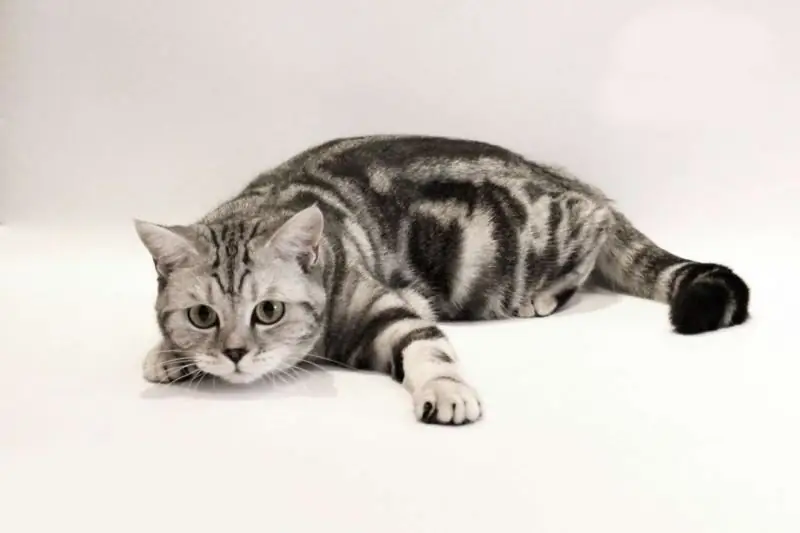
Features of the Scottish Straight breed: appearance, character, difference from British shorthair cats. How to choose a pet, take care of him. Owner reviews
Russian Blue Cat: Description Of The Breed, Photos, Features Of Care And Maintenance, Breeding Cats, Choosing A Kitten, Owner Reviews

Everything you need to know about the Russian blue cat: the history of the formation of the breed, characteristics, behavioral features, rules for the care and breeding of animals
Oriental Cat: Breed Description, Maintenance And Care, Photos, Kitten Selection, Oriental Breeding, Owner Reviews
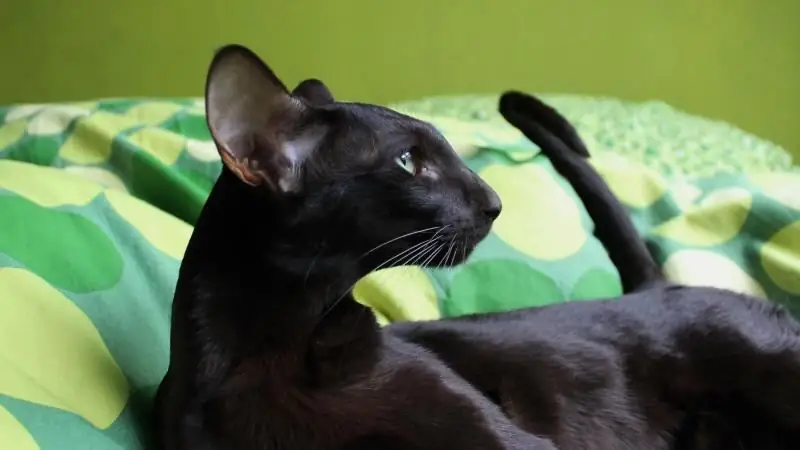
What is the difference between oriental cats and other breeds. Breed standards and temperament. Features of the care, maintenance and feeding of orientals. Choosing a kitten. Breeding
Cartesian Cat Chartreuse: Breed Description, Character And Upbringing, Maintenance And Care, Photos, Owner Reviews
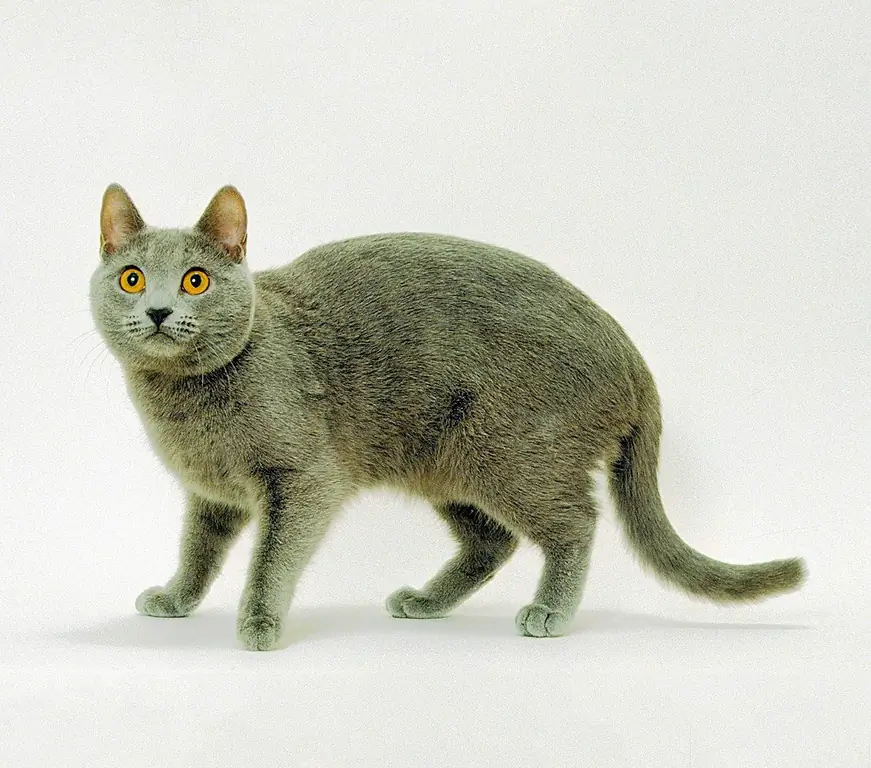
Where is the Chartreuse breed of cats bred, what are the main external differences, what character it has, how to properly care for the breed, how to choose a kitten
Belgian (Bengal Cat): Description Of The Breed, Character And Habits, Maintenance And Care, Owner Reviews, Photos
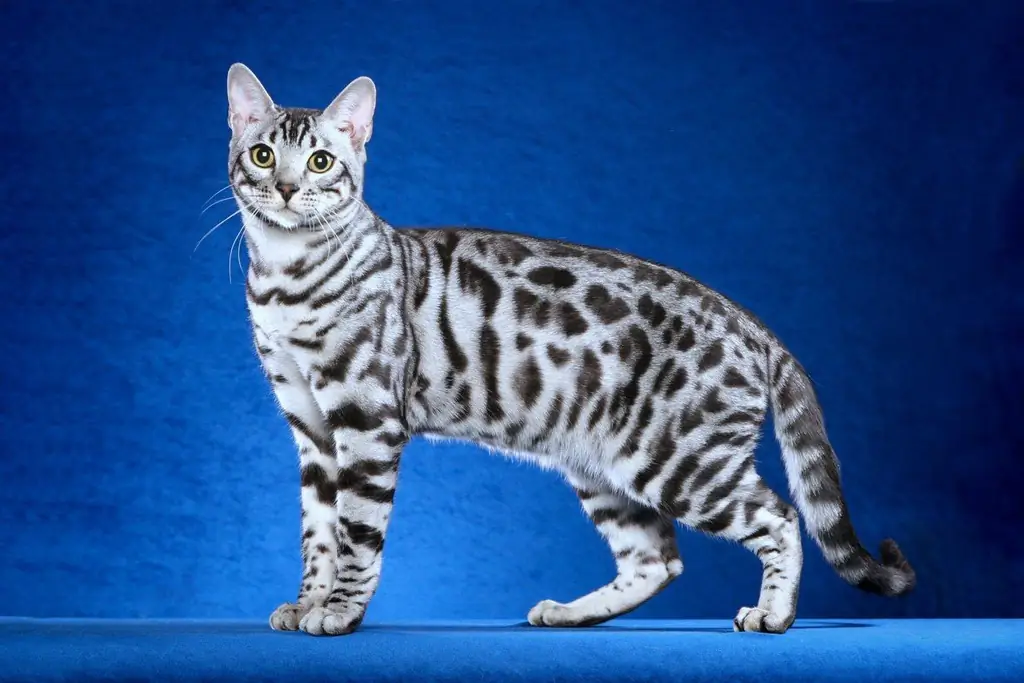
The history of the origin of the breed. The appearance of a Bengal cat. Bengal character. Health. How to take care of your pet. How to choose a kitten. Reviews
